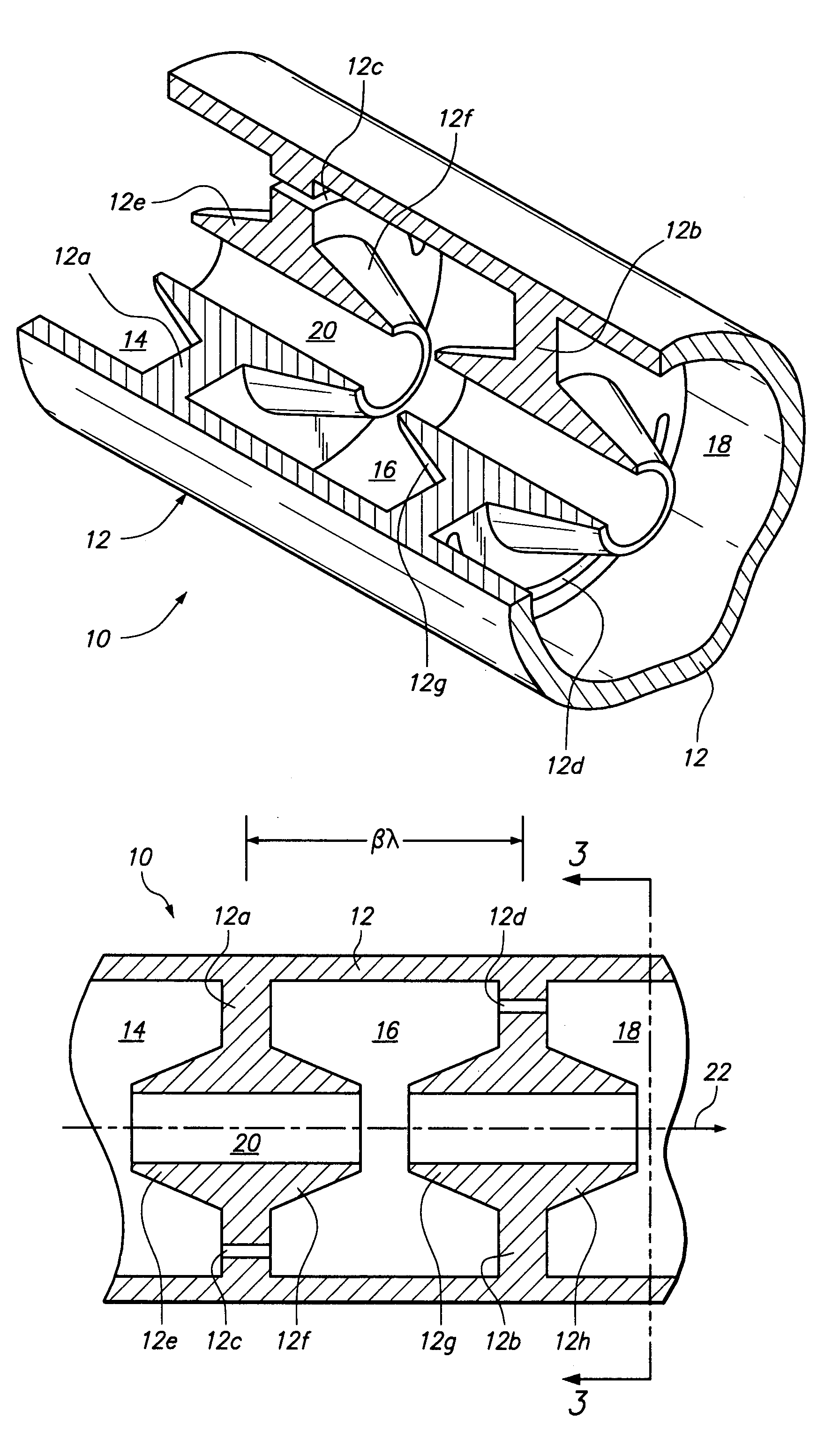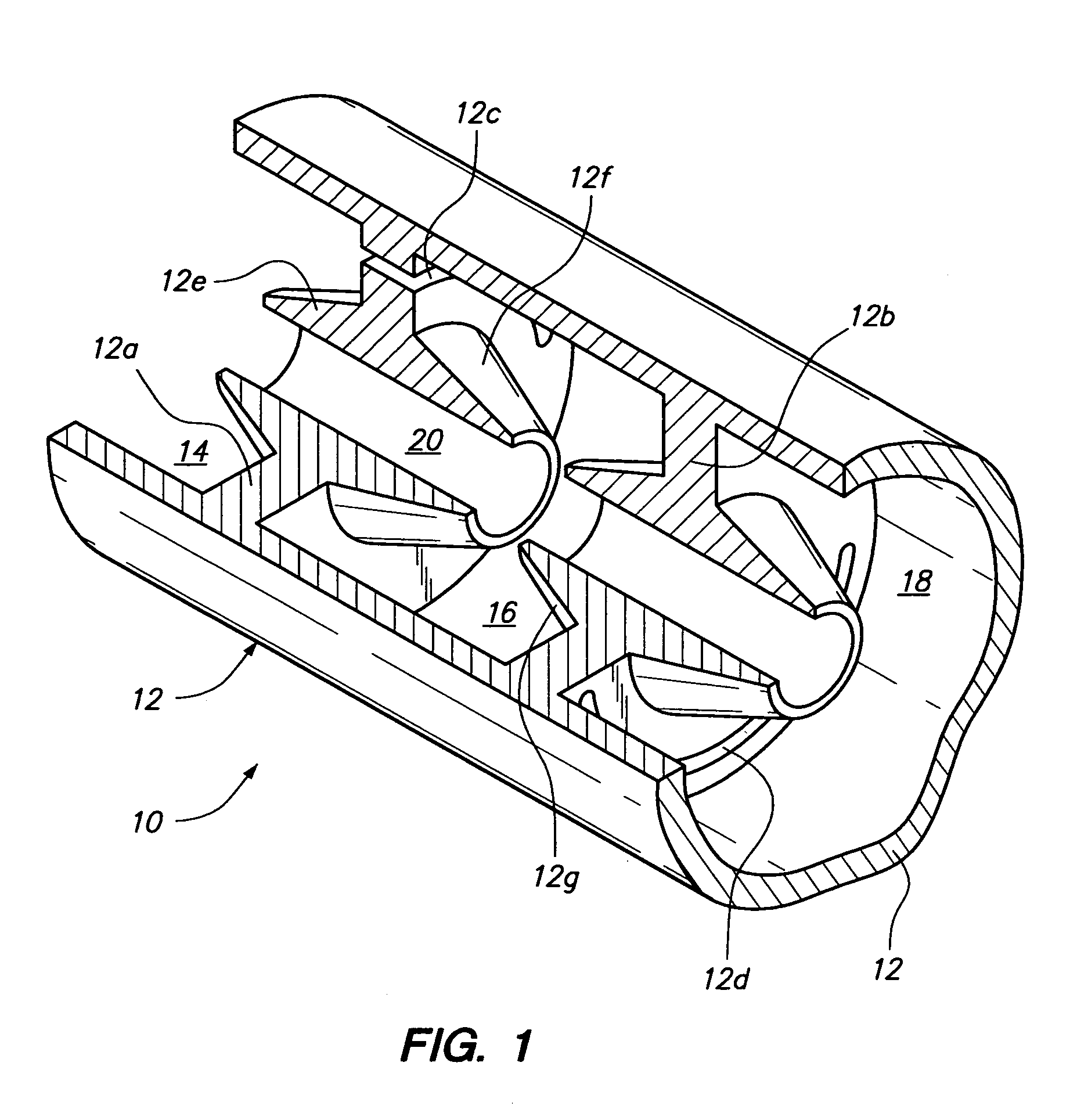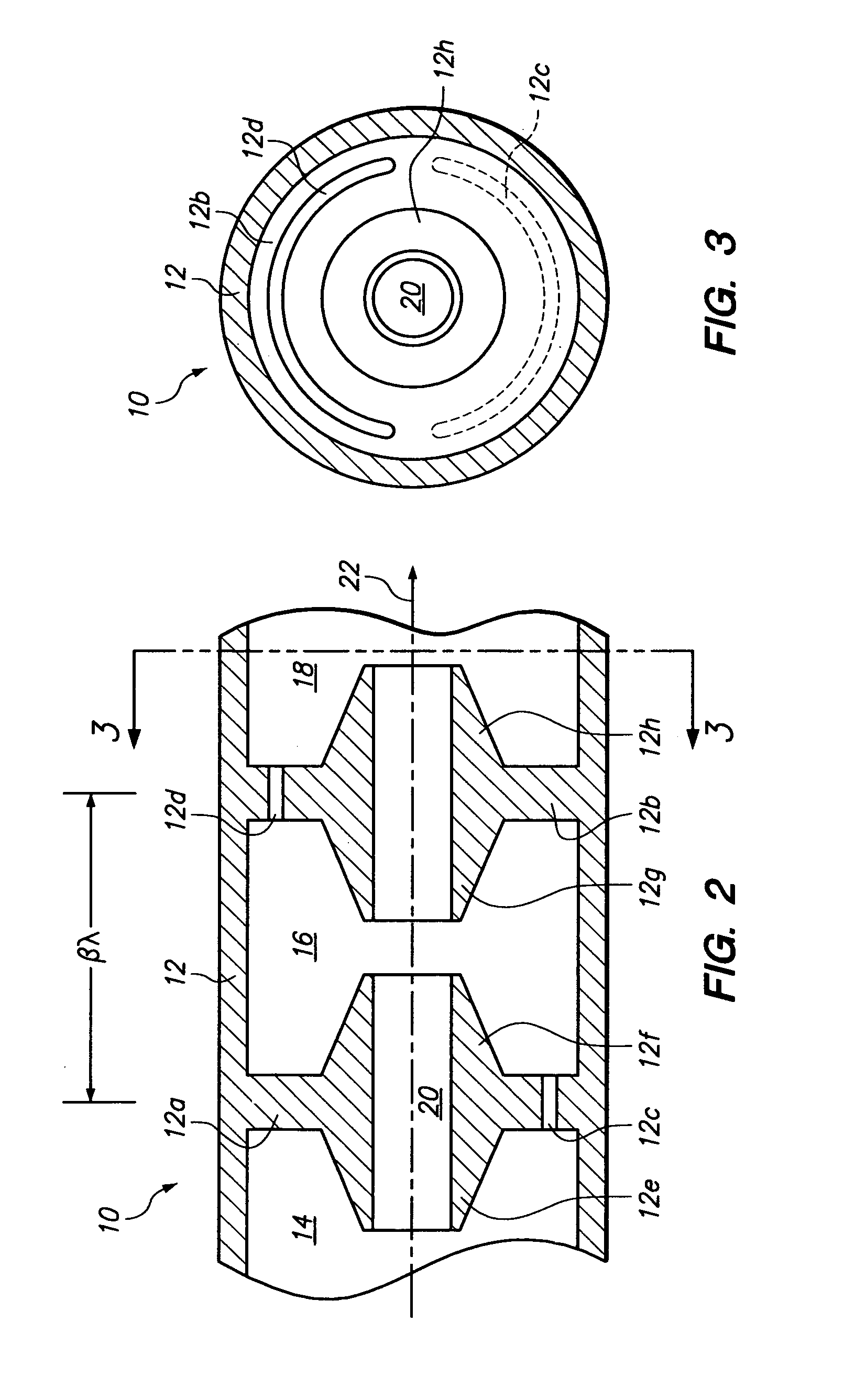Slot resonance coupled standing wave linear particle accelerator
a standing wave and particle accelerator technology, applied in accelerators, klystrons, electric discharge tubes, etc., can solve the problems of large and more complex high-energy linear accelerators, small mode separation, and disturbance of the synchronism between particle beams and standing waves, so as to optimize the timing and effectiveness of alternating electric fields
- Summary
- Abstract
- Description
- Claims
- Application Information
AI Technical Summary
Benefits of technology
Problems solved by technology
Method used
Image
Examples
Embodiment Construction
[0042]The present invention provides a linear standing wave particle accelerator having a series of resonant accelerating cells connected by slots, at least some of which slots are sized and shaped so as to be resonant at a frequency comparable to that of the accelerating cells.
[0043]FIGS. 1 through 3 illustrate a segment 10 of a linear standing wave accelerator constructed in accordance with a first preferred embodiment of the present invention, which is referred to herein as “biperiodic” for reasons explained below. The segment 10 includes a cylindrical copper accelerator tube 12 having transverse interior walls 12a and 12b, which together partially define three successive accelerating cells, or cavities, 14, 16 and 18 (additional interior walls adjacent cavities 14 and 18 are not shown). Cells 14 and 16 share a common interior wall 12a, and cells 16 and 18 share common interior wall 12b.
[0044]While the terms “cell” and “cavity” are generally used interchangeably herein, the term...
PUM
 Login to View More
Login to View More Abstract
Description
Claims
Application Information
 Login to View More
Login to View More - R&D
- Intellectual Property
- Life Sciences
- Materials
- Tech Scout
- Unparalleled Data Quality
- Higher Quality Content
- 60% Fewer Hallucinations
Browse by: Latest US Patents, China's latest patents, Technical Efficacy Thesaurus, Application Domain, Technology Topic, Popular Technical Reports.
© 2025 PatSnap. All rights reserved.Legal|Privacy policy|Modern Slavery Act Transparency Statement|Sitemap|About US| Contact US: help@patsnap.com



